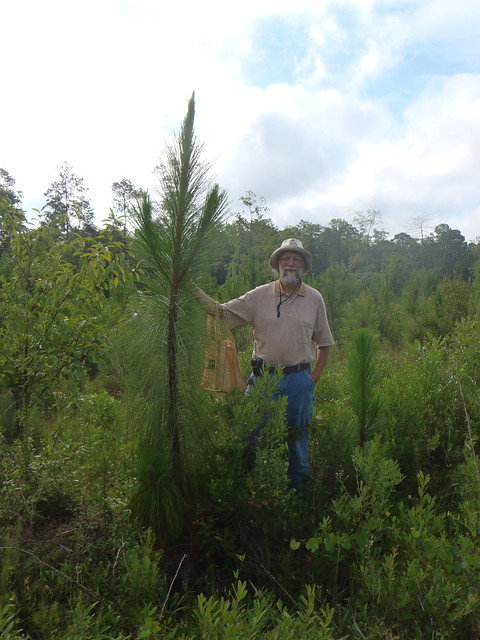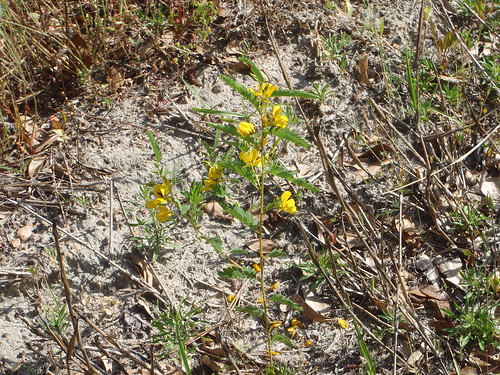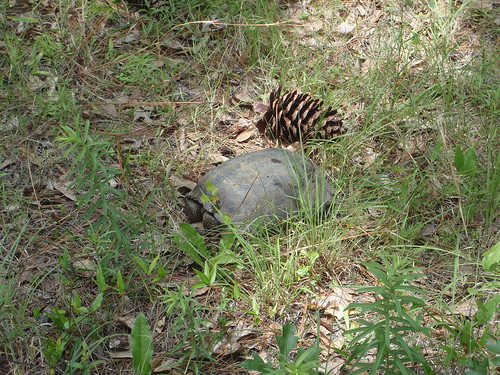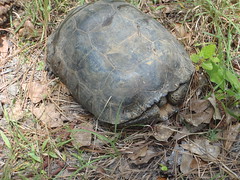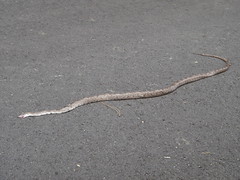The yellow dog is right: I burned those trees! Before picture of one of them: Continue reading
Tag Archives: Longleaf
Planted longleaf pines, 17 March 2011
 Pinus palustris of various sizes.
We planted these trees four years ago.
This one is bolting up from grass stage.
Pinus palustris of various sizes.
We planted these trees four years ago.
This one is bolting up from grass stage.
Bottle brush stage (plus starting some branches): Continue reading
longleaf and wiregrass
About Longleaf (Pinus palustris), wiregrass (Aristida stricta), and gopher tortoise (Gopherus polyphemus) by the Longleaf Alliance:
We believe that longleaf in any form is better than a cotton field; that longleaf and native ground cover (like wiregrass) is better than longleaf alone; that longleaf, wiregrass, and gopher tortoises are better than longleaf and wiregrass alone.
Picture of Pinus palustris and Aristida stricta by John S. Quarterman, Lowndes County, Georgia, 19 February 2011.
-jsq
Ice stalagmites
Longleaf sapling, not yet three years old
Tall Longleaf
That’s right, the nine foot tall longleaf I’m holding is only three years old. They told us they would never grow without spraying. But we weeded these trees with hoes and gloves, and here they are.
Picture of John S. Quarterman with trees by Gretchen Quarterman, Lowndes County, Georgia, 2 July 2010.
The Art of Managing Longleaf
 The surprising thing is so few people have heard of Leon Neel.
Here’s a very interesting biography of this very influential
pioneer in southeastern forestry and agriculture, including
many interesting stories of south Georgia and north Florida
life and politics:
The surprising thing is so few people have heard of Leon Neel.
Here’s a very interesting biography of this very influential
pioneer in southeastern forestry and agriculture, including
many interesting stories of south Georgia and north Florida
life and politics:
The Art of Managing Longleaf:Leon Neel was a atudent, apprentice, and successor of Herbert Stoddard, who was originally hired by quail plantation owners around Thomasville to figure out why their quail populations were decreasing. The answer included a need to thin and especially to burn their longleaf pine tree forests. Stoddard and Neel studied and practiced for almost a century between them on how to preserve and increase the amount of standing timber and species diversity while also selectively harvesting trees to pay for the whole thing. Their Stoddard-Neel Approach is written up in textbooks. In this book we learn how it came about, and how it is basically different from the clearcut-thin-thin-clearcut “efficient” timbering cycle that is the current fad among pine tree growers in the southeast.
A Personal History of the Stoddard-Neel Approach,
by Leon Neel, with Paul S. Sutter and Albert G. Way.
It starts back in the old days of Leon Neel’s youth when his daddy taught him to hunt quail: Continue reading
Blooming partridge pea
Chamaecrista fasciculata, showy partridge pea, planted as part of the Conservation Reserve Program (CRP) that includes along with longleaf pine trees some Native Warm Season Grasses (NWSG) and partridge pea.
Little bluestem, partridge pea, and longleaf: Continue reading
Longleaf video by Nature Conservancy
 With appearances by
Moody Forest and people from there and from the
Longleaf Alliance, not to mention
gopher tortoises and indigo snakes:
With appearances by
Moody Forest and people from there and from the
Longleaf Alliance, not to mention
gopher tortoises and indigo snakes:
Fire forest, yes! But they forgot to mention Smilax: catbriar, greenbriar, those vines that like to catch you in the woods.
Thanks to Gary Stock for the tip.
-jsq






